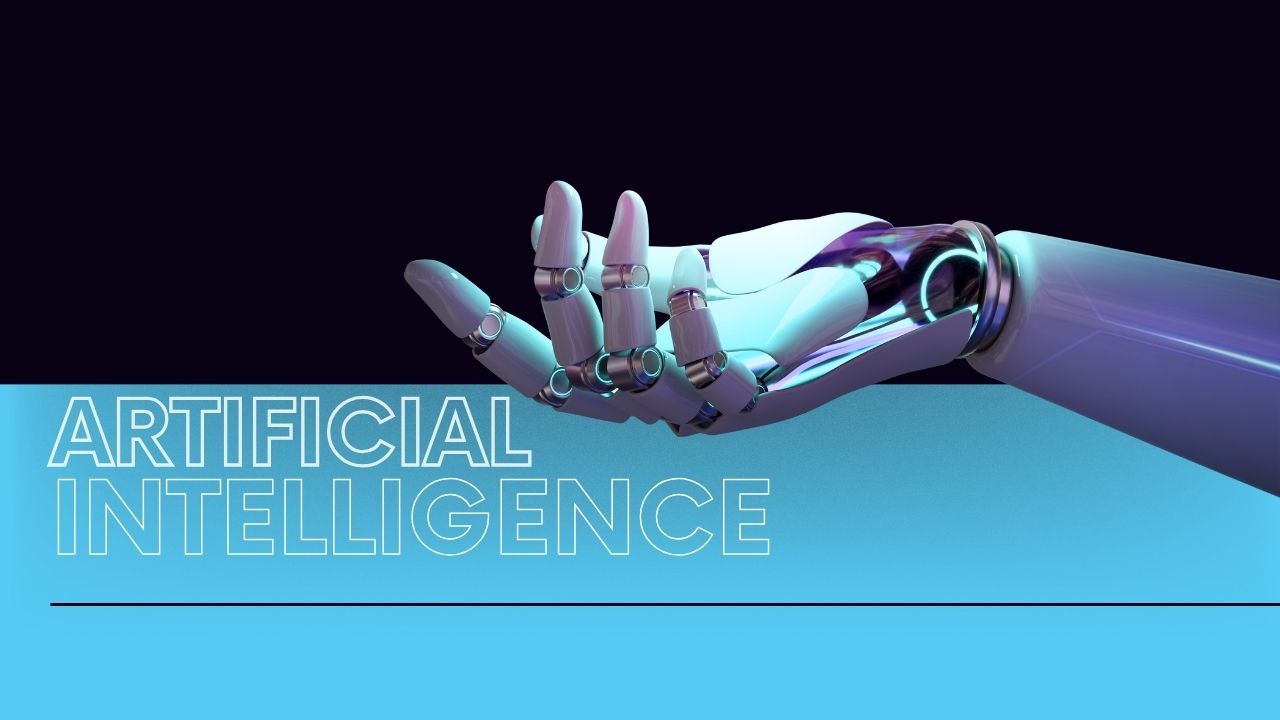Adobe Max is this week and so far, Adobe has already made a ton of announcements about really cool AI features getting rolled out into their various tools. They’ve improved Adobe Photoshop’s generative fill. They’ve added some really cool new Adobe Illustrator text-to-vector models. Adobe Express got some awesome AI updates, and there’s a whole new Firefly model that makes insanely realistic images. I could break them all down in my end-of-week news video, but there have been so many that I felt it deserved its own video. So, I’m going to go ahead and break down the event for you, and we’re even going to test out some of the cool new updates they’ve rolled out. Let’s get into it.
Adobe Generative Fill event
They started off the Adobe Generative Fill event by talking about some of the really cool generative fill tricks that you can use in Photoshop. We’ve had these for a little bit now, but they never cease to impress me every single time I see them. To direct your eye to the subject, I’m just making a very rough selection with my nervous hands, and there we go. Look at that, thank you so much. So, let’s go ahead and play around with it a little bit. The first thing I’ll do is drag in a headshot of myself. I’m going to go ahead and do a little outline around my face like this, connect it up, click generative fill, and let’s say add sunglasses. Click generate, and just like that, I got a sweet pair of shades. It gave me this option, this option, and this option. The third one’s probably my favorite. It’s also really good at blending multiple images together. Let’s go ahead and create a new image here, and now I’ve got this large image here, and I want to blend two images together. So, let’s pull this interesting image in here, let me shrink it down a little bit, and I’ll also pull this image in here. They’ve got kind of a similar style.
But they’re not quite the same. I’m going to bring this one next to this one here. I’m going to delete out a little chunk here in the middle so we’ve got that gap. Let’s select this little gap here in the middle like this and let’s click generative fill. I’ll just click generate, I’ll leave it blank, and we get two images that blend into each other pretty naturally.
Magic W tool
I’m going to go ahead and merge all these layers together, use my magic W tool to select this outer area here. I’m going to modify my selection a little bit to expand it, so let’s expand it by 30 pixels so that it sort of bleeds into the image a little bit here. Let’s click generative fill and let’s fill in the rest of the image for us, and there we go.
Now, let’s say I want to superimpose my face on this guy. Let’s do that real quick. I’m going to grab this image that we created earlier. I’m going to go ahead and remove the sunglasses and just grab my face. I’ll select the whole image, we’ll jump over to this one, paste it in here. Let me transform it so it kind of covers this guy’s face a little bit. I’m going to bring my opacity down a little bit just so I can line it up a little bit better, and we’ll put it right there. One thing that’s really cool now is we’ve got this new remove background button.
So, I can click this while on my layer with my face on it, and it’ll just cut out the background around my head with just one click. Now, the hair and the guy’s face behind me are a little bit funky, so I’m going to go ahead and use my lasso tool here, and I’m going to kind of work around my head a little bit up here where all this guy’s hair is. Bring it around, overlap on my head just a little bit here, and I’ve got this funky shape here. But let’s just go ahead and click generative fill and let’s generate and see what it does with that background, and just like that, it cleaned it up a little bit. I still got a little bit of hair going on right here, let’s clean that up.
blank generative fill
I’m going to go ahead and do a blank generative fill again, click generate, and that’s looking pretty good. Now, let’s go ahead and clean up where my shirt is because that’s obviously not blending with this guy very well. This time I’m going to go ahead and use the quick selection tool, start selecting this area around here where my shirt is, just grab it all, and let’s go ahead and do generative fill one more time and see how it blends it with the rest of the guy’s body. And there you go, some super quick and dirty compositing. The first time I did this exact same process, this was what I got. I liked this version quite a bit better, but unfortunately, as I’m recording this time, this is what I came up with, doesn’t look quite as cool.
I’m going to go ahead and pull in my profile pick here as a new image just to show off one more cool thing. They have this option now to select the subject. If I click on this, it will automatically try to find the main subject of the image, and you can see that it did a pretty good job of mostly finding me. I can use my quick selection tool here to kind of clean up the rest, and one quick click, and now I’ve got a cutout of me that I can use however I want. I didn’t have to do any sort of painful dragging out my outline to get it either, so Photoshop Generative Fill still pretty impressive.
But the most impressive thing that they announced at Adobe Max was actually the features that they added into Adobe Illustrator. I’m going to tell you about those in just a minute, but before I do, I want to tell you about today’s sponsor, Wirestock. If you’re not familiar with Wirestock, it’s a single platform where you can upload your images, your photos, your drawings, any artwork that you create, and it will submit it to all of the stock photo websites for you. It’ll create titles, it’ll create descriptions, it’ll create keywords, it’ll let the platforms know if it was AI generated. It will do all the work for you. All you have to do is upload the images.
AI-generated images
Many of the stock photo websites now actually allow you to upload AI-generated images. Platforms like Adobe Stock, Freepik, Dreamstime, 123RF, and AO all allow AI-generated images, and if you submit your images
Straight to Wirestock. Wirestock will then submit them to all those platforms for you. And what’s even cooler is if you’re a premium member of Wirestock, you can generate images directly from within Wirestock. So, if I click on this generate button here, I have the ability to generate images in various styles, various orientations, and even upload images to get a specific style. However, they also have some really cool features like “Reimagine.” With Reimagine, I can upload any image I want, and it will create more images that are similar to that one. For example, let’s say this image that I created of a man at a laptop is selling really well on stock photo sites, and I want to double down, I want to make more images like this one to sell. I could simply drag that image into the Reimagine section here, click the Reimagine button, and just like that, I’ve got three more images that look very similar to the one that’s already doing well.
Image Mixer,
They’ve also got this really cool “Image Mixer,” where it will actually blend two images together. So, here’s a cool colorful image that I made of Geralt from The Witcher. Let’s toss this into box one here, and here’s an image of a woman that I made in Mid Journey. Let’s go ahead and take this other image, drop it up here, and they’re two pretty different images. Let’s go ahead and click generate and see what the blend looks like. And from the combination, we get something completely wild and something completely new.
Wirestock also has this cool “Explore” page where you can actually see which images are selling well on other stock photo sites right now and generate more images that are similar. So check out Wirestock to start making money off of your AI-generated images and use the coupon code “Matt20” to get 20% off your premium membership. Thank you once again to Wirestock for sponsoring this video.
Adobe Illustrator
Now let’s check out some of the cool AI features that they’ve rolled out into Adobe Illustrator. One of the cool things that they showed off at the event was that you can upload any image, and it will actually figure out the font that’s in the image and allow you to write new text using this new font that it just figured out for you. But by far, the coolest feature is the ability to generate vector graphics using text prompts, like they did with this airplane here. So if I jump into Adobe Illustrator, I’m going to go ahead and clear my canvas here. Let’s go ahead and create a box, so I’m just going to create a square box like this. And then I’m going to use my selection tool, and you’ll notice when I use my selection tool, it brings up this bar that looks very similar to the generative fill bar that we get in Adobe Photoshop. If I click “Generate Beta,” you can see the prompt “magical campfire around tents,” etc. is there, but let’s do a “wolf walking in the woods” and click generate. I get some options of these cool vector graphics of a wolf walking in the woods.
And because these are vectors, every element of this image is easily editable. So I can use my direct selection tool here, select any area of the wolf. Let’s say I want to mess with this tail right here. I can come in here and change the color of the tail just like that. Now my wolf has a blue shadow on its tail. And because it’s a vector graphic, that means it’s infinitely scalable. I can keep on making this image larger and larger without any loss of image quality. I’m going to go ahead and delete this one, and we’ll do another example here. Let’s draw another square, use our selection tool, and we’ll click “Generate Beta” again.
Over here, we have other options. We can do a subject, a scene, an icon, or a pattern. So if I want a repeating pattern of a wolf walking in the woods, and I click generate, I have a few options of wolves with woods. There’s that one, there’s that one, and there’s that one. And just like that, I have an image that repeats. I can drag it around, and you can see there are no seams. It’s just a repeating image.
AI Style Matching
Alright, one last cool thing I want to show you about Adobe Illustrator. I’m going to go ahead and delete this again. We’ll create our box here, but they added “AI Style Matching.”
The ability to match the style of any other image. So I’m going to go ahead and move this to the side and I’m going to pull in an image here. Let me shrink this down a little bit, and I want my new vector graphic to sort of resemble the color scheme and essence of this image. So let’s come back over to our square. We’ll click “Generate,” and let’s do “a woman walking in this city.” And let’s go ahead and change this to “scene” again. Right here, we’ve got this button called “style picker.” If I click this and then use my little eyedropper tool on this image, I’m telling it to match the style of my new graphic to the style of this image. Now, if I click “Generate,” I get a woman walking in the city with a similar color scheme. And here’s what it looks like when I create a wolf matching this color scheme. And here’s another variation, and another one. And once again, all of this is editable. I could click on this wolf’s ear up here and make it bigger, stretch it out if I want. Everything about this image is editable, as if I had drawn it myself inside of Illustrator. I’m sure you can already imagine all of the use cases for things like logo design and designing graphics for your website or anything like that. Unlike tools like MidJourney where you just get what you get, every little piece is customizable once the image is generated.
Now, they also announced that “Illustrator for the Web” is available. You can find it over at creativecloud.adobe.com/slcc/illustrator. Create a new file, and you have a sort of stripped-down version of Illustrator. Now, this doesn’t seem to have all the same AI features in it yet, at least not that I could find. So I’m not going to really dive into this, but it’s basically a simplified version of the full version of Illustrator.



